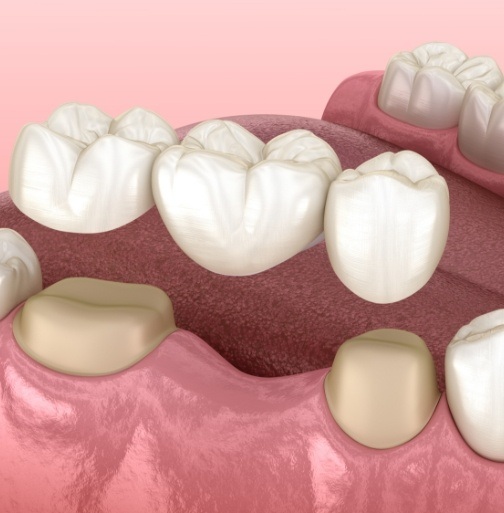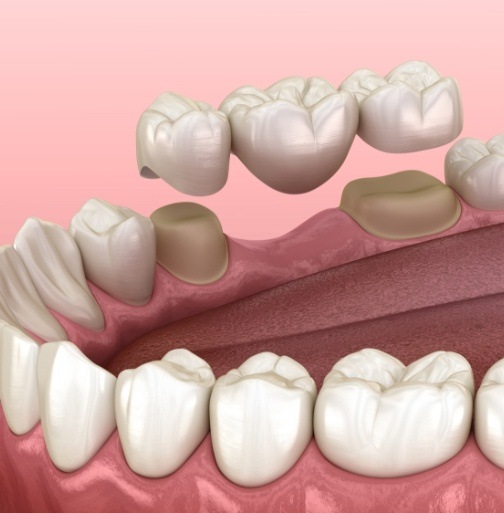Dental Bridges – Newington, CT
Fill in the Gap
in Your Smile
If you have a missing tooth or a group of adjacent missing teeth, dental bridges can help conceal, fix, and fill in the empty gap with false teeth. Dental bridges can replace one single tooth or multiple teeth and are made up of two main parts: the pontic and the crown. The pontic is the actual false tooth or set of false teeth that will take place of the missing tooth. The crown or crowns — depending on your dental needs — are located to the left and right of the false tooth.
Why Choose Cedar Mountain Dental for Dental Bridges?
- Long-Lasting Dental Materials
- Variety of Bridges to Choose From
- Excellent, Welcoming Dental Team
How do dental bridges work?

Dental bridges work by attaching the crowns of the dental bridge to the teeth that are directly beside/adjacent to the gap. These neighboring teeth are known as abutment teeth and provide support for your new dental bridge. Depending on your dental needs, your doctor will either recommend a removable dental bridge or a fixed/permanent dental bridge, which can be made of different materials such as porcelain, ceramic, gold, or metal alloy. There are various types of dental bridges available, which include:
- Traditional dental bridges
- Cantilever dental bridges
- Maryland bonded dental bridges
- Implant-supported bridges
Why are dental bridges used?

Dental bridges are used to help close or “bridge” the gap between two neighboring teeth. Dental bridges can help:
- Provide tooth replacement
- Improve the appearance and health of your smile
- Maintain bone structures of the face
- Prevent surrounding teeth from shifting out of position
- Correct issues affecting your bite
- Reduce the risk of temporomandibular joint disorder
What does the process for dental bridges involve?

If your dentist determines that you are an appropriate candidate for dental bridges, you will come in for an initial preparation visit along with a series of follow-up appointments to ensure the fit of your bridges. During your initial dental visit, your dentist gently removes a layer of enamel from the abutment teeth to which each crown will be fitted. Next, your dentist will take oral impressions of your teeth. The impressions will be sent to a lab where your custom dental bridge will be made. Your dentist will have you wear a temporary bridge until your bridge is ready.
Once your dental bridge is ready, you can return to the dental office where the temporary bridge will be removed, and you will be fitted with your custom dental bridge. Once your new bridge is placed, your dentist will assess and modify the bridge until the device fits comfortably. If your bridge is permanent, before permanently cementing the bridge to your teeth, your doctor may use temporary cement to ensure that there is a good fit.
What are the benefits of dental bridges?

If one or more of your teeth are missing, dental bridges may provide the following benefits:
- Improved appearance of smile
- Helps maintain oral health
- Reduced risk of gum disease
- Firm and permanent attachment
- Natural look-and-feel
- Restored ability to chew and speak
- Prevention of the shifting of teeth

